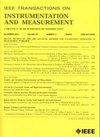基于扩展隔离林的半监督深度迁移学习轴承故障诊断方法
IF 5.9
2区 工程技术
Q1 ENGINEERING, ELECTRICAL & ELECTRONIC
IEEE Transactions on Instrumentation and Measurement
Pub Date : 2025-07-10
DOI:10.1109/TIM.2025.3586368
引用次数: 0
摘要
工业状态监测利用迁移学习来增强设备诊断。然而,现有的深度迁移学习(DTL)方法面临着一个严峻的挑战,即仍然需要大量带注释的样本来进行鲁棒故障诊断,并且训练深度模型仍然是耗时和费力的。为了解决这一问题,我们提出了一种基于改进扩展隔离林(EIF)的半监督深度转移方法用于跨域轴承故障诊断。首先,使用EIF对非目标任务样本进行评分,并采用异常分数的算术平均聚合机制来识别潜在的故障模式。结合K-S (Kolmogorov-Smirnov)检验和置信度驱动的Hellinger距离的混合度量,为异常评分样本生成伪标签。随后,在这些标记数据上训练深度学习(DL)模型。最后,使用最少数量的目标域标记数据来改进预训练模型,以完成跨域轴承故障诊断。在HUST轴承数据集和自构建数据集上进行的大量验证测试表明,该方法在标记样本显著减少的情况下实现了较高的诊断准确性。实验结果表明,采用微调策略的新方法在HUST轴承数据集和自构建数据集上的诊断准确率都比传统的直接转移方法提高了20.52%以上,同时将微调所需的标记样本减少到仅5%。本文章由计算机程序翻译,如有差异,请以英文原文为准。
A Novel Semi-Supervised Deep Transfer Learning Method With Improved Extended Isolation Forest for Bearing Fault Diagnosis
Industrial condition monitoring leverages transfer learning to enhance equipment diagnostics. However, existing deep transfer learning (DTL) methods face a critical challenge, which still requires substantial annotated samples for robust fault diagnosis, and training deep models remains time-consuming and labor-intensive. To address this gap, we propose a semi-supervised deep transfer method based on an improved extended isolation forest (EIF) for cross-domain bearing fault diagnosis. First, nontarget task samples are scored using an EIF with an arithmetic mean aggregation mechanism for anomaly scores to identify latent fault patterns. A hybrid metric integrating the Kolmogorov–Smirnov (K–S) test and confidence-driven Hellinger distance is employed to generate pseudolabels for anomaly score samples. Subsequently, deep learning (DL) models are trained on these labeled data. Finally, a minimal quantity of target-domain labeled data is used to refine the pretrained models to complete cross-domain bearing fault diagnosis. Extensive validation tests on the HUST bearing dataset and a self-constructed dataset demonstrate that the proposed method achieves high diagnostic accuracy with significantly fewer labeled samples. The experimental results demonstrate that the proposed novel approach with a fine-tuning strategy achieves over 20.52% higher diagnostic accuracy than traditional direct transfer approaches on both the HUST bearing dataset and the self-constructed dataset while reducing the required labeled samples for fine-tuning to only 5%.
求助全文
通过发布文献求助,成功后即可免费获取论文全文。
去求助
来源期刊

IEEE Transactions on Instrumentation and Measurement
工程技术-工程:电子与电气
CiteScore
9.00
自引率
23.20%
发文量
1294
审稿时长
3.9 months
期刊介绍:
Papers are sought that address innovative solutions to the development and use of electrical and electronic instruments and equipment to measure, monitor and/or record physical phenomena for the purpose of advancing measurement science, methods, functionality and applications. The scope of these papers may encompass: (1) theory, methodology, and practice of measurement; (2) design, development and evaluation of instrumentation and measurement systems and components used in generating, acquiring, conditioning and processing signals; (3) analysis, representation, display, and preservation of the information obtained from a set of measurements; and (4) scientific and technical support to establishment and maintenance of technical standards in the field of Instrumentation and Measurement.
 求助内容:
求助内容: 应助结果提醒方式:
应助结果提醒方式:


